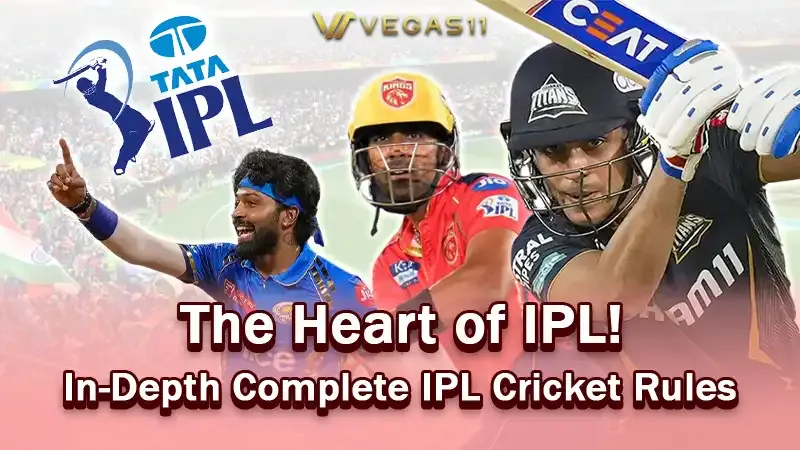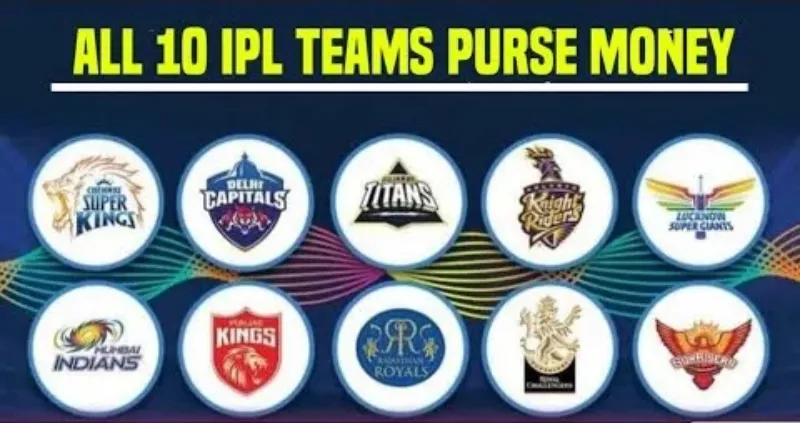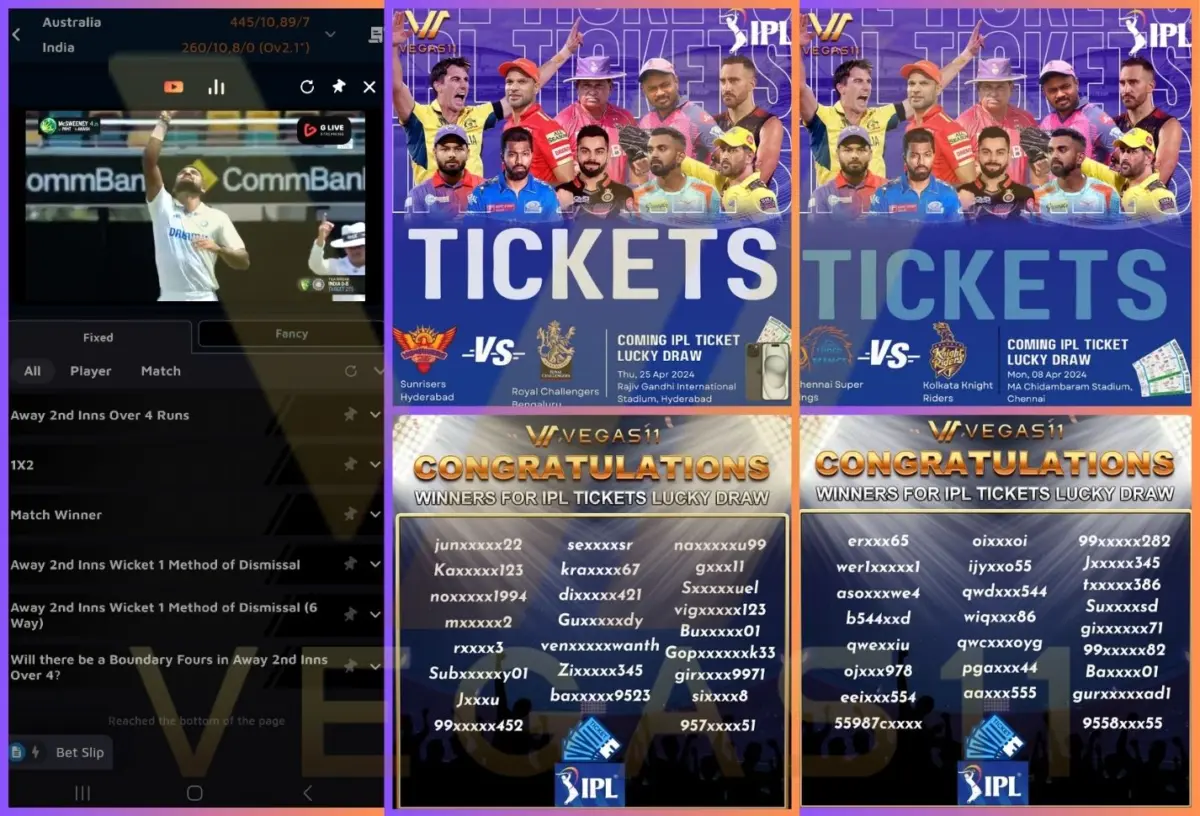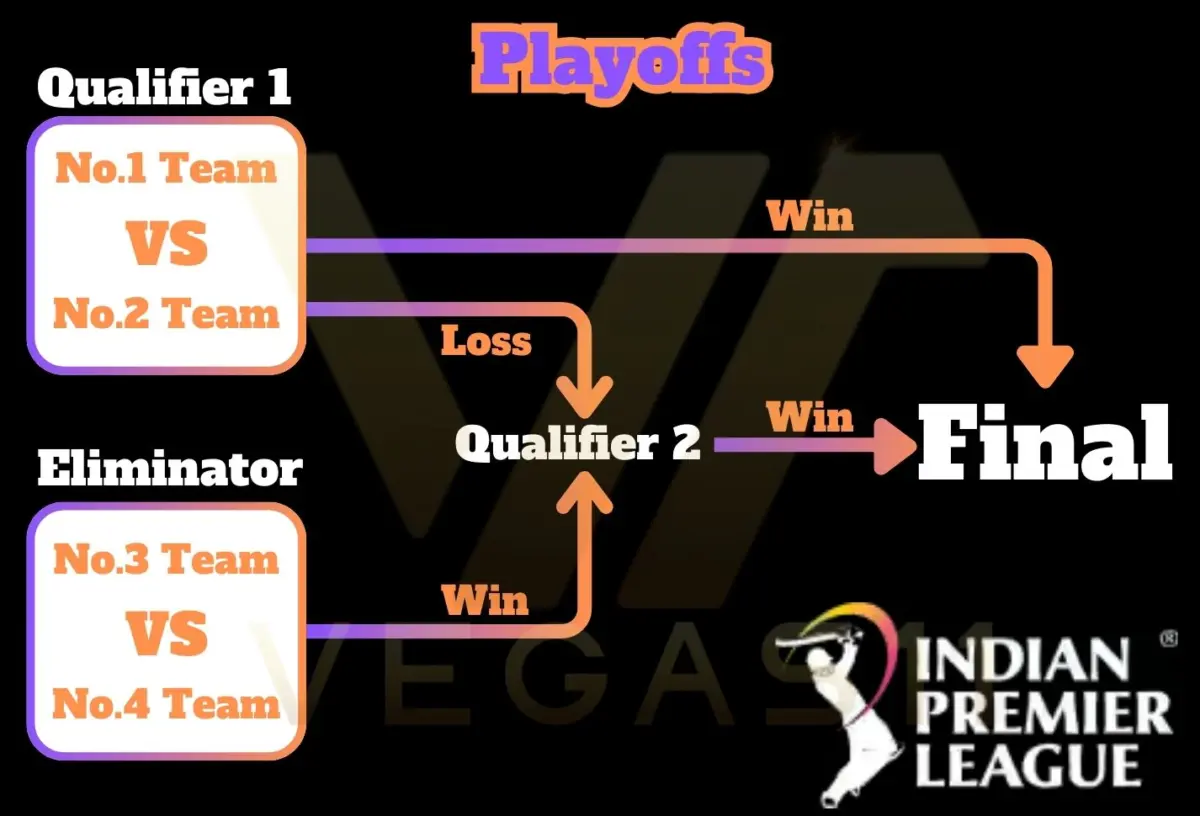
The IPL matches use the T20 format, and each match can decide the winner within 3 hours.
How much do you know about the IPL cricket rules and format? Want to know how many innings are there in an IPL match? What are the restrictions during the match? What are the advancement rules? This IPL rules guide will answer all your questions.
The IPL uses the T20 format, with each team sending out 11 players (a maximum of 4 foreign players on the field). Each team has one innings, with 20 overs per innings, and 6 balls per over. At the end of each team’s bowling innings, a total of 120 legitimate balls will be bowled in IPL cricket rules.
The bowling team must complete 20 overs of bowling within 90 minutes; the match will only end when either all 10 batsmen are out or both teams have completed 20 overs, the team with the higher total score is the winner.
💡 If the match ends in a tie after 20 overs, the match will go into a Super Over, with each team only sending out 3 batsmen and 1 bowler to compete for the final victory! Read More: T20 Cricket Guide: Format, India Team Schedule and Betting
The name T20 cricket is very straightforward, representing that each team has 20 overs of bowling; the "T" also stands for "Twenty."
Because the fast-paced nature of the match makes the play more intense, this quick and high-intensity format can maximize audience engagement in a short amount of time.
In IPL cricket rules, each team can have a maximum of 25 players (at least 18 players), and the player positions include: batsmen, all-rounders, wicketkeepers, fast bowlers, and spin bowlers.
Each team can have a maximum of 8 foreign players. In each match, only up to 4 foreign players can be on the field.
Each team has a total of 5 substitute players, only one of whom can become an Impact Player who takes on a batting or bowling role. The other substitutes can only serve as fielders or runners.
Only under these three conditions can the team substitute the Impact Player: before or after the start of each over, when a batsman is dismissed, or injured and leaves the field.
Each team must have at least 12 Indian local players, with at least one of them being a player from the team's home city.

In an IPL match, a bowler can bowl a maximum of 4 overs, which equals 24 balls.
If the bowling team fails to complete 20 overs within 90 minutes, there are three different penalties (depending on the situation):
1. A fine ranging from ₹120,000 to ₹300,000.
2. A direct penalty of runs by the umpire.
3. Only 4 fielders are allowed within the 30-yard circle.
During the Powerplay period of the first 6 overs of an IPL match, only 2 fielders are allowed outside the 30-yard circle. From the 7th over onwards, up to 5 fielders are allowed outside the 30-yard circle.
A bowler can bowl a maximum of two bouncers per over, if more than two bouncers are bowled, these will be called a No Ball by the umpire. The batting team will be awarded an extra run, and the batsman will also receive a Free Hit.
In each inning of the match, each team is allowed a 2-and-a-half-minute "Strategic Timeout," so there can be up to four strategic timeouts in an IPL match.
According to the rules, the bowling team can request a timeout between the 6th and 9th overs, while the batting team can request a timeout between the 13th and 16th overs.
💡 If a team does not request a strategic timeout within the designated time, the umpire will enforce a timeout after the 9th over or the 16th over.
Each team has 2 challenge opportunities per inning (to question the umpire's decision). If a challenge is successful, it will not count against the team's challenge limit.
Follow Vegas11 for more cricket information! Betting on IPL matches is now open, do you already have a champion team in mind? Bet now! Everyone has a chance to get IPL live tickets, bringing you directly to the venue to watch the match live!

The season structure is divided into the Regular Season (Group Stage) → Playoffs → Final (Champion). The tournament typically starts in late March and ends in late May each year.
The 10 teams are drawn to determine their groups and matchups, followed by a double round-robin format in IPL cricket rules. Each team will play twice (once at home and once away) against the other four teams in their group and one team from the other group; play one match against each of the remaining four teams from the other group.
Each team plays a total of 14 matches, with rankings determined based on points, and the top 4 teams with the highest points directly qualify for the playoffs.
The playoffs will consist of 3 matches, the 1st match is called Qualifier 1, the 2nd match is called the Eliminator, and the 3rd match is called Qualifier 2; then the final (championship match) will take place.
Recommended Reading: 2025 IPL Playoffs: Format, Rules, and Team Predictions!
Chennai Super Kings (CSK) holds the record, having reached the IPL final 10 times and winning the title 5 times.
Delhi Capitals, with the lowest win percentage in IPL history, has finished at the bottom of the standings multiple times and has only reached the final once.

Only the top 4 teams in the IPL each year are eligible for prize money in IPL cricket rules. The amount awarded varies annually and is based on the total prize pool for that season. Most teams give extra rewards to the championship-winning squad.
The 5 most common individual awards are: the most boundaries scored, the best young player (under 23 years old), the most valuable player (overall performance), purple cap (highest wicket-taking bowler), and orange cap (highest run-scorer of the season).
The prize money for individual awards fluctuates each year! It mainly comes from the sponsors of the season, and the more sponsors there are the higher the prize money. Related Reading: Indian cricket salaries revealed: Who earns the most in 2025?
David Warner holds the record for the most Orange Caps, having won the award three times (in 2015, 2017, and 2019).
Dwayne Bravo and Bhuvneshwar Kumar. They Both are record holders for the Purple Hat, having won the award twice each.

© 2025 Vegas11 Official Blog